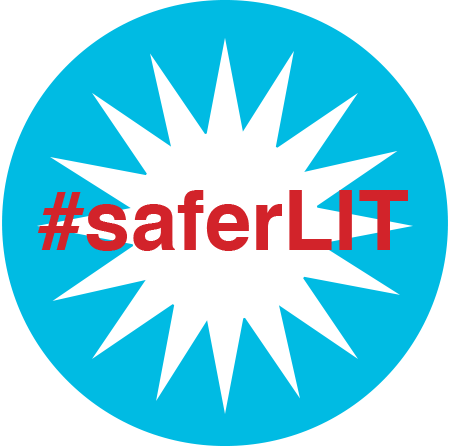ISSN: 1941-4137
POETRY THAT ENACTS THE ARTISTIC AND CREATIVE PURITY OF GLASS
POETRY THAT ENACTS THE ARTISTIC AND CREATIVE PURITY OF GLASS

Janelle Salanga is a second-year student at the University of California, Davis, currently studying cognitive science and Asian American studies; when she’s not biking to her favorite coffeeshops, studying, or binge-watching Jane the Virgin, she reads poetry for The Cerurove and serves as the flash fiction editor for Homology Lit. Her work has been published or is forthcoming in Occulum, The Margins, Sea Foam Mag, and The Brown Orient.
December 4, 2018
Edited by Stephanie Kaylor
Edited by Stephanie Kaylor
Review of Aperture by Anna Leahy
 Aperture
Anna Leahy
Shearman Books, 2017
Women’s stories have been relegated to the corners of history, “so much / cropped out in a jump cut.” In Aperture (Shearman Books, 2017), poet and English teacher Anna Leahy’s second full-length collection, Leahy sheds light on those stories. She weaves history and fiction, bringing the stories of women from Mary Todd Lincoln and Joan of Arc to Dorothy Gale's mother and Saint Barbara into the present. Aperture, in photography, is an opening through which light travels; in choosing to bundle and title female narratives as such, Leahy suggests that the telling of women’s stories is equivalent to letting in light — that a history without women’s voices is dark.
But Leahy's poems also assert that darkness is nothing to be afraid of. Instead of portraying women as needy receivers of affection, she offers them agency over their thoughts and validates emotional whiplash.
How much is enough?
A hundred drops in an evening will lead me
to the difference between
intransitive and transitive,
between drop: slump, decline, fall, plunge
and drop: let go of, release.
— "Laudanum"
In "Laudanum", Leahy makes evident the intelligence, creativity, and searing desperation of Lizzie Siddal, a painter's model and poet from the 19th century through playing on the various meanings of the word "drop" and letting Lizzie speak through them: drop as a dose of laudanum, a popular cure-all remedy at the time later discovered to be lethal; drop as an emotional lurch; drop as a physical fall. By giving Lizzie the ability to draw meanings out of each word, Leahy pays homage to her subject's skill with words while highlighting her propensity to overthink and fall into sadness without sparing readers from both aspects of Lizzie's personality.
Leahy does the same in writing as Mary Todd Lincoln, subverting the popular idea of a woman who went mad in the wake of her husband's death.
Reason is easily restored by a few weeks in the /
country and the realization that perhaps a woman /
who does not know what she is doing can have too /
many footstools and never enough friends, to whom I /
write in hopes they will remove me from the black-/
and-white circumstances in which I find myself…
Where is the /
carriage to retrieve me, where that large hand in
which to place mine? Where, sorrow?
— "IV."
Through the laments, and the rambling, block-like structure of the poem, representing an undiverted stream of thoughts, Leahy underscores the experience of grief: how the mind can be completely clear and yet obscured. She beckons us to sit in this grief and face it, that of a friend, a mother, a wife, a woman of multiple identities that have been shattered by one tragic accident. Yet she imbues Mary Todd with a fighting spirit, a defiant desire to persist and to confront sorrow.
The one blemish on this collection is its need for context; because Leahy draws on such a vast number of historical figures, especially the saints, one must do some digging on their own to understand fully the gravity of the experiences she alludes to. That being said, there is still much merit to be found and emotional nuance to be discovered upon reading the poems without context, as I discovered my first read through, where I was struck by the particularly relevant call to action in "Conversing with Saint Catherine": "May we say something instead of nothing; / May silence be more dangerous than speech." The plea belies the raw aching of a saint, one who is characterized typically as a beatific receptor of pain without complaint — yet Saint Catherine, and the voices of the other saints in this collection, sing out in a chorus of struggles, some as trifling as boredom and as familiar as others' disbelief.
Leahy pushes us to fixate on the ability of voice & silence to be wielded as weapons, echoed throughout the rest of the poems in the collection, implying that women's silencing results in a calcifying of emotion and a lack of acceptance for the wild, wacky, and deeply felt. Though the first section proceeding the fugue is comprised of fictional women who were never written into the Oz stories, Leahy's decision to include them in this narrative reminds readers that every hero and villain has been shaped by a woman and that fantasy often mirrors reality.
The tongue illuminates consequences:
my words go and others' come back…
Indeed, we are as interested in each other /
as we are in ourselves.
— "Mrs. Witch's Letter to Her Widowed Sister,
regarding their daughters"
Leahy, through electing to write this poem as a letter, and the rest of the poems in this section in unorthodox forms — a television interview, a snippet of restroom graffiti, a statement to the press — heightens the reality of the women's stories. In particular, though, the letter epitomizes the confiding nature of female friendship and family while underscoring the importance of voice in shaping people, whether through the back-and-forth of familial arguments or the trading of family advice in favor of experiential learning.
In switching between various points of view at different segments of the collection, including first-person singular and plural and third-person, Leahy positions herself as both an observer and a conduit, creating the impression that the women have chosen her to tell their stories, instead of the other way around. "O, to be / significant!", Leahy writes in "The Habits of Light," one of two poems in her coda. Aperture is a triumphant song allowing women to reclaim significance and claw their way back into prominence through Leahy's able weaving of words.
Visit Anna Leahy's Website
Visit Shearman Books' Website
Aperture
Anna Leahy
Shearman Books, 2017
Women’s stories have been relegated to the corners of history, “so much / cropped out in a jump cut.” In Aperture (Shearman Books, 2017), poet and English teacher Anna Leahy’s second full-length collection, Leahy sheds light on those stories. She weaves history and fiction, bringing the stories of women from Mary Todd Lincoln and Joan of Arc to Dorothy Gale's mother and Saint Barbara into the present. Aperture, in photography, is an opening through which light travels; in choosing to bundle and title female narratives as such, Leahy suggests that the telling of women’s stories is equivalent to letting in light — that a history without women’s voices is dark.
But Leahy's poems also assert that darkness is nothing to be afraid of. Instead of portraying women as needy receivers of affection, she offers them agency over their thoughts and validates emotional whiplash.
How much is enough?
A hundred drops in an evening will lead me
to the difference between
intransitive and transitive,
between drop: slump, decline, fall, plunge
and drop: let go of, release.
— "Laudanum"
In "Laudanum", Leahy makes evident the intelligence, creativity, and searing desperation of Lizzie Siddal, a painter's model and poet from the 19th century through playing on the various meanings of the word "drop" and letting Lizzie speak through them: drop as a dose of laudanum, a popular cure-all remedy at the time later discovered to be lethal; drop as an emotional lurch; drop as a physical fall. By giving Lizzie the ability to draw meanings out of each word, Leahy pays homage to her subject's skill with words while highlighting her propensity to overthink and fall into sadness without sparing readers from both aspects of Lizzie's personality.
Leahy does the same in writing as Mary Todd Lincoln, subverting the popular idea of a woman who went mad in the wake of her husband's death.
Reason is easily restored by a few weeks in the /
country and the realization that perhaps a woman /
who does not know what she is doing can have too /
many footstools and never enough friends, to whom I /
write in hopes they will remove me from the black-/
and-white circumstances in which I find myself…
Where is the /
carriage to retrieve me, where that large hand in
which to place mine? Where, sorrow?
— "IV."
Through the laments, and the rambling, block-like structure of the poem, representing an undiverted stream of thoughts, Leahy underscores the experience of grief: how the mind can be completely clear and yet obscured. She beckons us to sit in this grief and face it, that of a friend, a mother, a wife, a woman of multiple identities that have been shattered by one tragic accident. Yet she imbues Mary Todd with a fighting spirit, a defiant desire to persist and to confront sorrow.
The one blemish on this collection is its need for context; because Leahy draws on such a vast number of historical figures, especially the saints, one must do some digging on their own to understand fully the gravity of the experiences she alludes to. That being said, there is still much merit to be found and emotional nuance to be discovered upon reading the poems without context, as I discovered my first read through, where I was struck by the particularly relevant call to action in "Conversing with Saint Catherine": "May we say something instead of nothing; / May silence be more dangerous than speech." The plea belies the raw aching of a saint, one who is characterized typically as a beatific receptor of pain without complaint — yet Saint Catherine, and the voices of the other saints in this collection, sing out in a chorus of struggles, some as trifling as boredom and as familiar as others' disbelief.
Leahy pushes us to fixate on the ability of voice & silence to be wielded as weapons, echoed throughout the rest of the poems in the collection, implying that women's silencing results in a calcifying of emotion and a lack of acceptance for the wild, wacky, and deeply felt. Though the first section proceeding the fugue is comprised of fictional women who were never written into the Oz stories, Leahy's decision to include them in this narrative reminds readers that every hero and villain has been shaped by a woman and that fantasy often mirrors reality.
The tongue illuminates consequences:
my words go and others' come back…
Indeed, we are as interested in each other /
as we are in ourselves.
— "Mrs. Witch's Letter to Her Widowed Sister,
regarding their daughters"
Leahy, through electing to write this poem as a letter, and the rest of the poems in this section in unorthodox forms — a television interview, a snippet of restroom graffiti, a statement to the press — heightens the reality of the women's stories. In particular, though, the letter epitomizes the confiding nature of female friendship and family while underscoring the importance of voice in shaping people, whether through the back-and-forth of familial arguments or the trading of family advice in favor of experiential learning.
In switching between various points of view at different segments of the collection, including first-person singular and plural and third-person, Leahy positions herself as both an observer and a conduit, creating the impression that the women have chosen her to tell their stories, instead of the other way around. "O, to be / significant!", Leahy writes in "The Habits of Light," one of two poems in her coda. Aperture is a triumphant song allowing women to reclaim significance and claw their way back into prominence through Leahy's able weaving of words.
Visit Anna Leahy's Website
Visit Shearman Books' Website
Glass: A Journal of Poetry is published monthly by Glass Poetry Press.
All contents © the author.
All contents © the author.





